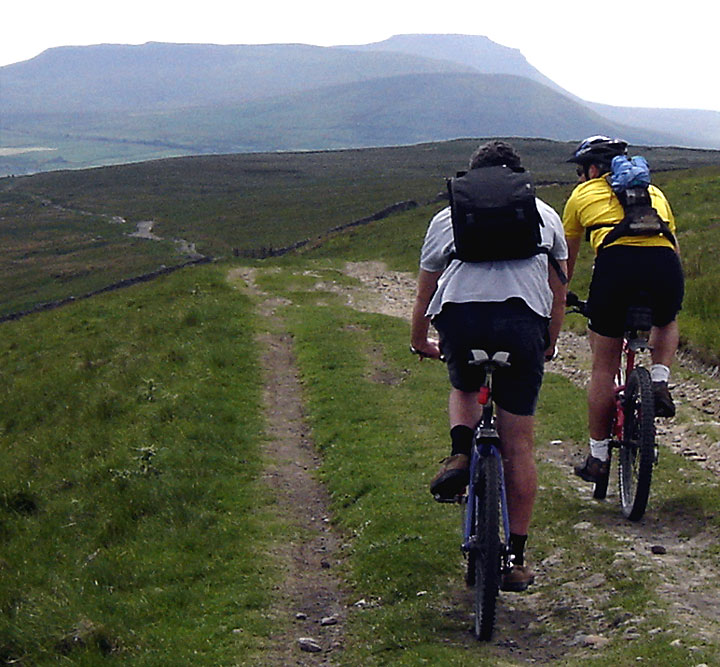
Here’s a Roman Road with the kind of beeline straightness you associate with those ironing-board landscapes south of the Severn-Trent line – but with the rugged verticality of the North. A Roman Road fit for a Yorkshireman. Via Virilis.
You can just imagine Fred Trueman’s eighty-greats-grandfather holding forth over an amphora of Ovis Niger ale: “T’Fosse Way? That in’t a road, lad, it’s a bloody promenade! You could walk that in ballet shoes! T’Cam High Road, that’s a road, and wi’ proper scenery an’ all! When Ah opened fer ’Awes agin’ t’Legionnaires o’ Bainbridge in 88AD, Ah bowled so fast…”, etc.
So make no mistake: this is the Dales. It can be a rough old surface (fine for a full-sus mountain bike, though), and in dodgy weather can be like facing Fred on a rain-affected pitch in the days before covered wickets. But even in half-decent weather this is a thrilling ride along arguably England’s most exciting Roman Road.
Probably the best way to do it is ending at Bainbridge, because you get a long straight downhill of four or five kilometres at the end. That’s the most photogenic section, thanks to its arrow-like nature. You have fabulous Dales views, and near the top of the hill, at the twisty bit below Wether Fell, is some rocky stuff that may or may not be original Roman surface (the road was comprehensively refurbed as the Richmond-Lancaster turnpike in the days of three-cornered hats).

On a blue-sky day you may see paragliders jumping off into the ether from near the summit of Wether Fell. Between here and Ribblehead Station, your public transport connection, the Roman Road continues as a paper-thin tarmac road and a rocky bridleway. The last few km to the station are on the B6255.